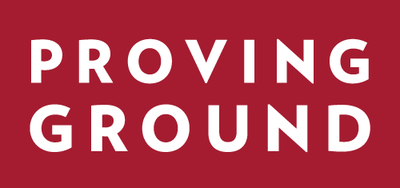Amber Humm Patnode, Acting Director of Proving Ground, shares progress in PG's Ohio districts in the tenth installment of Improving Improvement, NNERP's quarterly series focused on leveraging the power of research-practice partnerships (RPPs) to build schools’, districts’, and states’ capacity to improve.
This is the tenth installment of Improving Improvement, our quarterly series focused on leveraging the power of research-practice partnerships (RPPs) to build schools’, districts’, and states’ capacity to improve. Previously, we shared how we support districts to strategically embed empathy building activities and student voice to inform improvement work. In this installment, we are following up on the progress of the Ohio cohort and how their empathy building and “ask them” activities are informing their improvement work. The Ohio cohort is comprised of eight urban or suburban school districts largely sponsored by the Ohio Department of Education and Workforce that are focusing on attendance and chronic absenteeism.
In November, Proving Ground hosted our annual Convening, where all of the districts, charter management organizations, state education agencies, and other entities with which we partner come together for two and a half days of learning, collaboration, and networking. Each year we survey our participants about the things they are most interested in talking with and learning from others about at the Convening and use this information to plan content and programming. Student and family engagement, along with best practices in supporting all learners, were topics of greatest interest this year. As we looked through the more nuanced feedback our partners provided about these topics, the overarching theme emerged: elevating student and family voice within continuous improvement efforts.
One of our Convening presenters, Dr. Shadae Harris, the Chief Engagement Officer for Richmond Public Schools (you can learn more about her and her work here), made a statement during one of the sessions that has stuck with me: “You have to get proximate to the people you want to serve.” In the previous installment, I shared that almost all of our partners complete a continuous improvement self-assessment before beginning improvement work with us that asks respondents to reflect on how well and how often their organization engages in various improvement activities and which critical perspectives are included in the process (such as staff, family, student, community perspectives). Whenever we ask this question, the majority of partners report that students are “never” engaged in improvement activities (such as identifying root causes of identified problems or selecting and designing interventions aligned to root causes) or that students are “sometimes” engaged, but primarily to provide feedback after decisions have been made. The pattern is very similar when we look at reported family involvement, with the majority of partners reporting that families are either “never” engaged or are “sometimes” engaged, but again mainly to provide feedback on decisions that have already been made or work that has been completed.
Read more on the NNERP website.
